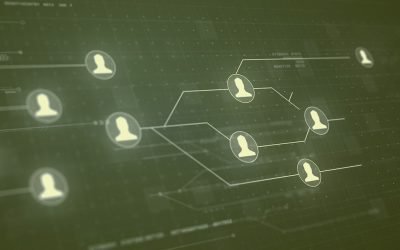Therapeutic communities and group analysis

Therapeutic communities and group analysis
Introduction
 This paper will review the literature on democratic therapeutic communities and group analysis, and highlight the theoretical and clinical similarities between democratic therapeutic communities and group analysis. The paper will compare classic therapeutic community and group analytic concepts, with illustrative case material. There are many similarities between therapeutic communities and group analysis, but there are also significant divergences, particularly in practice.
This paper will review the literature on democratic therapeutic communities and group analysis, and highlight the theoretical and clinical similarities between democratic therapeutic communities and group analysis. The paper will compare classic therapeutic community and group analytic concepts, with illustrative case material. There are many similarities between therapeutic communities and group analysis, but there are also significant divergences, particularly in practice.
This paper provides an additional theoretical basis for therapeutic community practice, and highlights both the need for a greater theorising of therapeutic community practice, and the importance of group-based approaches in mental health. The paper is the first to review the relevant literature, and to compare theory and practice in therapeutic communities and group analysis, highlighting their common roots in the Northfields Experiments in World War II. Democratic therapeutic community (TC) practice and group analysis (GA) in the UK grew from the same roots in the war-time Northfields Experiments. “[…] from this hotbed of experimentation had come both group analysis and the idea of the therapeutic community,” (Clark, 1987, p. 5).
Pines stated that Foulkes began to practise GA in 1939 (Pines, 2009), although Mannheim (1939) was the first to use the term “group analysis”, a fact which Foulkes himself acknowledged (Winship, 2003, p. 38). Harrison said that “During 1942, Foulkes elucidated the concept of group transference (Foulkes and Lewis, 1944)”, while over the winter of 1942-43, Bion and Rickman developed what became known as the First Northfield Experiment (Bion and Rickman, 1943; Bion, 1946, 1961; Harrison, 2000, p. 13). According to Harrison, Bion and Rickman turned “psychiatry upside down” by “forging an alliance with the patients (sick soldiers) in order to defeat the problems of mental ill-health”, and instigating daily group discussions for the whole ward in what was primarily a communal living environment; and that the two Northfield Experiments “implemented entirely new methods of group psychotherapy.
These included dealing with the reality of ‘here-and-now’, making the examination of members’ interrelationship the centre of therapy, allowing the psychodynamics to reveal themselves, and working with the group transference. Leadership was another focus […]” (Harrison, 1999, pp. 19-20).
Main also said that Northfield was where the concept of the TC was born (Main, 1983, p. 203). Even Lacan, who visited London for five weeks in 1945, and effusively detailed a long conversation he had with Bion and Rickman, described them as “pioneers” of a “revolution”, and talked of Bion undertaking “to organise the situation so as to force the group to become aware of the difficulties of its existence as a group, and then to render it more and more transparent to itself, to the point where each of its members may be able to judge adequately the progress of the whole […]” (Lacan, 1947, p. 17).
Foulkes worked at, and was involved with, both developments at Northfield – the TC and GA, although he left TC work, and was no longer directly involved with in-patient psychotherapy, but concentrated on GA, and the Group Analytic Society. Foulkes acknowledged the links between the TC and GA in many of his writings, and described his development of small group therapy, and of working with the ward as a community, and later the whole hospital (Foulkes, 1983, 1984, 1986, 1990b; Foulkes and Anthony, 1965).
De Maré talked of meeting Foulkes at Northfield in 1944, and stated that Foulkes was “the only person who witnessed the ‘Northfield experiment’ (2nd) throughout, from his instituting it in July 1943 to his demobilisation in December 1945” (De Maré, 1983, p. 218). However, according to De Maré, Foulkes did not become fully aware of the first experiment until Rickman revisited Northfield in 1944 (De Maré, 1983, p. 223). De Maré suggested that Foulkes approached the second experiment in “an entirely different and more circumspect manner”, by regarding the total situation – the whole hospital, and all the hospital staff – as his frame of reference, and Phase B of the second experiment involved, initially, a whole
ward as a community being conducted on small-group lines, and then all wards being conducted along group lines (De Maré, 1983, pp. 223-5).
De Maré concluded that “it was this dialectic duality between relationship and context that constituted the basis for his (Foulkes) success, and particularly the application of what Foulkes called ‘group analytic principles’ to an entire context, which resulted in the ‘large-scale transformation of a whole hospital’ – the first therapeutic community’ as described by Main” (De Maré, 1983, pp. 224, 226; Main, 1946, 1977).
TCs and GA also had common personnel initially – Foulkes, Bridger, De Maré at Northfield – and later, Clark at Fulbourn Hospital, Pines at the Cassel Hospital, Roberts at Ingrebourne Centre, Blake at Kensington and Chelsea Day Centres, Whiteley at Henderson Hospital, Kennard at Littlemore Hospital, Haigh at Winterbourne TC and, more recently, Pearce at Oxford Complex Needs Service (Pines, 1999).
Of these, Whiteley has been the most prominent in linking TCs and GA. However, as Harrison noted, “Some therapeutic communities were inspired by Northfield; but the influence of Maxwell Jones (Mill Hill Hospital, Belmont Hospital, Henderson Hospital and Dingleton Hospital) tended to overshadow the earlier and more complex model” (Harrison, 1999, p. 29). Nevertheless, Hinshelwood observed that “The engagement in a group learning process has become a core feature of therapeutic communities. It is the group activity as much as the learning one which is crucial – although it seems that the group activity has to be of a learning kind” (Hinshelwood, 1999, p. 40).
© The International Journal of Therapeutic Communities 2017
Read full version
Thanks to authors’s contribution this scientific article is free. To download the integrated version it is necessary to become a member of the network.
Article author
Contribute by enriching the contribution
You May Like
Babel Meeting. The democratic therapeutic community in the world today
Global Virtual Event A moment of meeting and discussion on the period we are going through, in the different corners of the world and an opportunity to dialogue on common interests to be developed in INDTC. HOW TO PARTICIPATE The Babel Meeting will begin Friday 7 May...
Considerations about the current situation in time of pandemic
We are living a terrible situation. Tragic. Fear, anxiety, loss, desperation and depressive thoughts are just some of the feelings I experience at times. They come in waves, contrasting with hope, serenity and the capacity to feel pleasure with small, important...
Underpinnings of the therapeutic community individualgroup dialectic, between clinical organisation and daily life
Abstract This contribution offers a general overview that departs, above all, from a relationship with the Mito&Realtà network, and describes the underpinning of the community architecture, highlighting the basic arrangement and internal articulations that work...







Recent Comments